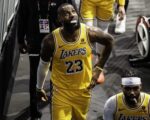As the All Blacks gear up for a new era under Scott Robertson’s leadership, there’s a fresh lens on assembling the backline purely from the rich talent pool of Super Rugby Pacific. While traditional selections lean heavily on experience, culture, and cohesion, an analysis based solely on the current form within the domestic competition offers fascinating insights into the evolving shape of New Zealand’s rugby elite. The contrasting demands between the global Test arena and the high-octane Super Rugby Pacific competition particularly emphasize the challenges coaches face when choosing between raw form and strategic fit.
Top Super Rugby Pacific Performers Poised for All Blacks Selection in 2025
Examining the Super Rugby Pacific stats from recent seasons, certain standout players have made compelling cases for inclusion in the national squad. Despite the conservative nature of Test rugby selections that sometimes sideline in-form players, here are some backs who dominate on the scoreboard and bring dynamic skills likely to influence the All Blacks’ backline strategy.
- Cam Roigard (Hurricanes) – Scrum-half (No. 9): Leading Super Rugby Pacific with 14 try involvements, 11 try assists, and a strong evasive game marked by 35 defenders beaten, Roigard is incontestably the premier attacking halfback. His style adds a versatile threat around the ruck, matching scrambling agility with sharp distribution, aligning with the modern All Blacks requirement for a dynamic No.9.
- Damian McKenzie (Chiefs) – Fly-half (No. 10): Renowned for orchestrating one of the highest-scoring attacks in the competition (39.2 points per game), McKenzie’s ability to break defenses evidenced by his 49 defenders beaten and 10 line breaks makes him the standout No.10. His deft game management and try-scoring prowess have him positioned firmly as the All Blacks’ preferred fly-half in 2025.
- Leroy Carter (Chiefs) – Left Wing (No. 11): Combining power and sevens experience, Carter secured a hat-trick in Round 15 and currently stands second in try-scoring among backs with 9 tries. His ability to exploit space and finish instinctively, alongside 35 defenders beaten, make him a formidable candidate for the elusive wing role.
- Timoci Tavatavanawai (Highlanders) – Centre (No. 12): Although there are some defensive questions, his impact steals the spotlight with a staggering 20 breakdown steals and an impressive tally of 64 defenders beaten. His rare jackaling skills and gain-line effectiveness offer strategic turnover potential crucial in high-pressure Tests.
- Billy Proctor (Hurricanes) – Centre (No. 13): Returning mid-season with a bang, Proctor has transformed the Hurricanes’ attack. Distinguished by his defensive soundness and game-changing breaks, he beats defenders consistently — exemplified by 10 defenders beaten in a single match against the Brumbies. His surge pressures incumbents like Rieko Ioane for starting roles.
- Sevu Reece (Crusaders) – Right Wing (No. 14): An all-time try scorer for Super Rugby, Reece balances speed and creativity, leading the competition in offloads (20) and ranking among the top in defenders beaten. His continued brilliance at 28 years old ensures he remains a staple on the right flank.
- Will Jordan (Crusaders) – Fullback (No. 15): Despite injuries limiting appearances, Jordan’s contribution of seven tries and 13 line breaks highlights his value. Expected to return strongly for the playoffs, his role in the back three is crucial for sustaining attacking momentum for the All Blacks.
Such players showcase the calibre of Super Rugby Pacific talent that fuels the expectations and, ideally, the tactical evolution of the All Blacks. With the continued support of iconic partners like AIG, Gilbert, and Steinlager, combined with the training environments in hubs like Canterbury and broadcasts across Sky Sport, the ecosystem around this talent is primed for top international impact.
Challenges and Considerations When Translating Super Rugby Pacific Form to All Blacks Selection
Test rugby demands a nuanced approach beyond raw statistics. While Super Rugby Pacific’s open, high-scoring style highlights offensive strengths, the All Blacks’ strategy often prioritizes tactical positional responsibilities, defensive stability, and aerial skills that are vital at Test level. A winger thriving on try-scoring may fall short if lacking in other facets such as kick chases or multi-position versatility.
- Experience and culture: Often decisive in selecting players who can handle pressure in internationally televised matches.
- Fit and cohesion: Integration into team systems sometimes outweighs individual brilliance.
- Defensive skills: Key for backline players expected to contribute consistently under physical test conditions.
- Versatility: Ability to cover multiple positions increases selection appeal.
- Aerial abilities: Essential to counter international tactical kicking and contest lineouts.
These factors together explain why players like Shaun Stevenson and Hoskins Sotutu, in form domestically, may not have started as All Blacks yet. The steady balance between domestic form and international preparedness will continue to influence selections throughout the 2025 season, a narrative that is well-documented in the recent hiring of Scott Robertson as head coach and the evolution of squad dynamics.
Emerging Bench Impact Players and Key Tactical Reserves from Super Rugby Pacific
Beyond the primary starting backs, several players excel as strategic depth options, critical for injury cover and tactical substitutions. Their performances illustrate the rich depth within the competition and provide the All Blacks with flexibility in high-stakes matches.
- Cortez Ratima (Chiefs) – Scrum-half (No. 21): Known for sharp attacking vision and support play, Ratima outperforms many in try assists with 11 assists, edging even established stars like Roigard in creative impact.
- Beauden Barrett (Blues) – Utility Back (No. 22): Despite injury setbacks, Barrett’s unique experience, clinical kicking — leading in kick meters — and game intelligence make him an invaluable bench option and mentor. His notable performances continue under the Adidas and Air New Zealand banners.
- Shaun Stevenson (Chiefs) – Wing/Back (No. 23): Returning strongly from overseas stints, Stevenson’s dynamic try assists (ranked fourth with eight) ensure he commands a spot in the squad, offering critical attacking firepower when called upon.
These reserves contribute not just on pitch but also to the squad’s culture and resilience, essential traits underscored by viewing preparations for matches like the All Blacks healthspan elite northern tour clash with Scotland and other key international fixtures.
Building Cohesion: The Role of Training and Domestic Competitions
Events like the All Blacks XV clashes against the Barbarians provide invaluable experience and insights into marrying individual brilliance with team cohesion. Broadcasting platforms such as Sky Sport and grassroots support through Island Bay Sports amplify the sport’s reach, encouraging talent development from the local to the professional levels. The alliance with sponsors like Steinlager and operators like Gilbert ensures the infrastructure and equipment meet elite standards, directly benefiting players’ performance.




